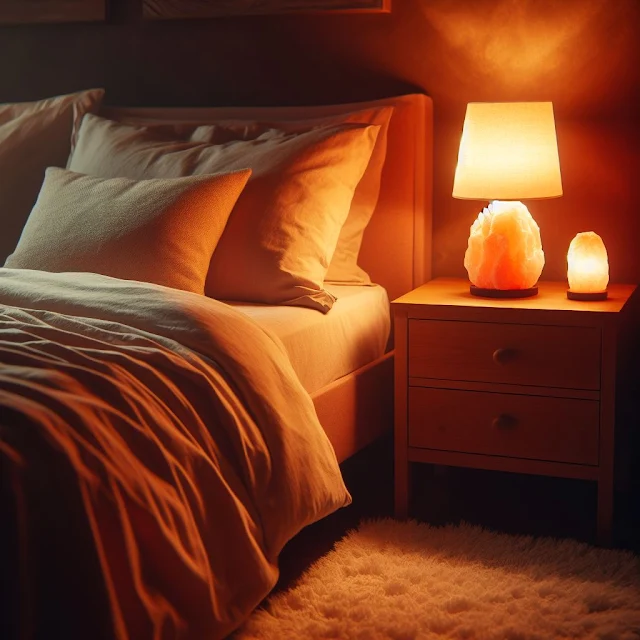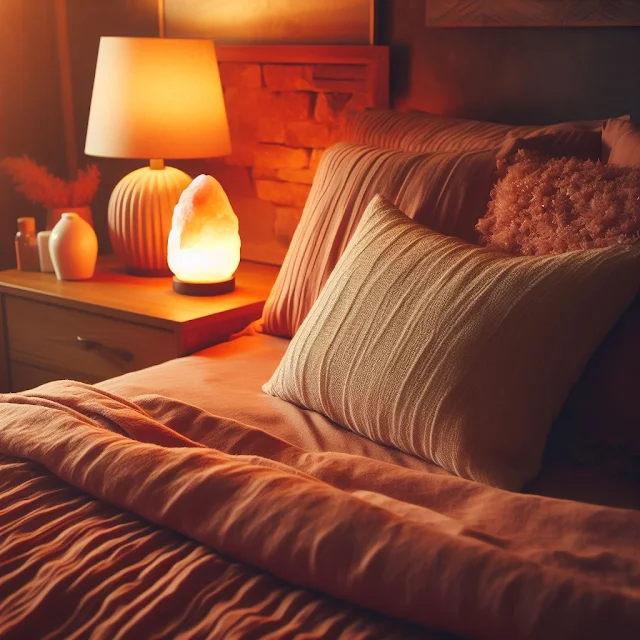Better Sleep, Better Health: Choosing the Right Bedroom Lighting Hues
Bedroom Lighting: Sleep is one of the most crucial components of a healthy lifestyle. It's during those precious hours of slumber that our bodies recharge, repair, and rejuvenate, preparing us for the challenges of the following day. However, many of us struggle to get the quality sleep our bodies crave, and the culprit often lies in our immediate environment—more specifically, the lighting in our bedrooms.
The hues and intensity of the lighting we expose ourselves to, especially in the hours leading up to bedtime, can significantly impact our sleep patterns and overall quality of rest. That's why it's essential to understand the relationship between light and sleep and make informed choices when it comes to the lighting in our bedrooms. In this article, we'll delve into the science behind light and sleep, explore the different lighting hues and their effects, and provide practical tips for creating a sleep-friendly bedroom environment.
Understanding the Science Behind Light and Sleep
Our bodies operate on a natural circadian rhythm, an internal clock that regulates our sleep-wake cycles. Exposure to light has a significant impact on this rhythm, so it's crucial to comprehend how different light wavelengths affect our sleep patterns.
The role of the circadian rhythm and melatonin production
At the heart of our circadian rhythm is the hormone melatonin, often referred to as the "sleep hormone." The pineal gland releases melatonin in response to darkness, alerting our bodies that it is time to wind down and get ready for sleep. Conversely, exposure to bright light suppresses melatonin production, keeping us alert and awake.
The impact of different light wavelengths (blue, red, etc.) on sleep
Not all light is created equal when it comes to its impact on our sleep. Blue wavelengths, which are emitted by many electronic devices and energy-efficient lightbulbs, have been shown to be particularly disruptive to our circadian rhythms and melatonin production. This is because blue light mimics the wavelengths of natural daylight, tricking our bodies into thinking it's time to be awake and alert.
On the other hand, warm hues like red and orange have a more calming effect on our bodies, promoting melatonin production and setting the stage for better sleep.
The concept of "sleep-friendly" and "sleep-disruptive" lighting
Based on these scientific principles, we can categorize different lighting hues as either "sleep-friendly" or "sleep-disruptive." Warm, reddish-orange hues characterize sleep-friendly lighting, whereas cooler, bluer tones describe sleep-disruptive lighting.
Choosing the Right Bedroom Lighting Hues
Now that we understand the science behind light and sleep, let's explore the different lighting hues and their effects in the bedroom.
Warm lighting hues (reds, oranges, and yellows)
Warm lighting hues, such as those emitted by traditional incandescent bulbs or candles, are generally considered sleep-friendly. These hues have a calming effect on the mind and body, promoting the production of melatonin and setting the stage for better sleep.
1. Their calming effect on the mind and body
Red, orange, and yellow hues can help lessen stress and anxiety, which are known to interfere with sleep quality. These hues have a soothing effect on the mind, allowing you to wind down and relax before bedtime.2. Promoting melatonin production for better sleep
As mentioned earlier, warm lighting hues are less disruptive to our body's natural melatonin production. By exposing ourselves to these hues in the hours leading up to bedtime, we can help signal to our bodies that it's time to start producing this essential sleep hormone.3. Recommended warm lighting options for the bedroom
Some excellent warm lighting options for the bedroom include:- Salt lamps
- Candles (for a cozy, romantic ambiance)
- Warm-toned LED bulbs or smart lighting systems with adjustable color temperatures
- Dimmer switches for traditional incandescent bulbs
Cool lighting hues (blues, greens)
While cool lighting hues like blues and greens may create a modern, crisp atmosphere in other areas of your home, they are generally considered sleep-disruptive when it comes to the bedroom.
1. Their stimulating effects on the brain
Cool, blue-toned hues have been shown to have a stimulating effect on the brain, suppressing melatonin production and keeping us in a state of alertness. This can make it challenging to wind down and fall asleep, potentially leading to restless nights and poor sleep quality.2. Suppressing melatonin production and disrupting sleep
As mentioned earlier, exposure to blue light wavelengths can trick our bodies into thinking it's daytime, effectively suppressing the production of melatonin and disrupting our natural sleep-wake cycles.3. When to avoid cool lighting in the bedroom
It's generally recommended to avoid cool, blue-toned lighting in the bedroom, especially in the hours leading up to bedtime. This includes the blue light that electronic devices like smartphones, tablets, and televisions emit.If you must use these devices before bed, consider enabling blue-light filters or wearing blue-light-blocking glasses to minimize the disruptive effects on your sleep.
Dimming and adjustable lighting options for better control
For optimal sleep quality, it's best to have a lighting system that allows you to easily adjust the brightness and color temperature of your bedroom lighting. This level of control can be achieved through:
- Dimmer switches for traditional incandescent bulbs
- Smart lighting systems with adjustable color temperatures (e.g., Philips Hue)
- Lamps with warm, adjustable lighting options
By having the ability to dim the lights and shift towards warmer hues as bedtime approaches, you can create a sleep-friendly environment that supports your body's natural circadian rhythms and melatonin production.
Practical Tips for Creating a Sleep-Friendly Bedroom Environment
In addition to choosing the right lighting hues, there are several other practical steps you can take to create a bedroom environment that promotes better sleep.
Using blackout curtains or blinds to block outside light
While controlling the lighting inside your bedroom is crucial, it's also important to consider external light sources. Streetlights, moonlight, and even early morning sunlight can disrupt your sleep patterns if left unchecked.
To combat this, invest in high-quality blackout curtains or blinds that can effectively block out external light sources. This will create a dark, sleep-friendly environment and prevent unwanted light from interfering with your body's natural sleep-wake cycles.
Avoiding bright screens (TVs, phones, and laptops) before bedtime
As previously mentioned, the blue light that electronic devices like televisions, smartphones, and laptops emit can be particularly disruptive to our sleep. It's best to avoid using these devices in the hours leading up to bedtime, as the blue light exposure can suppress melatonin production and make it harder to fall asleep.
If you must use these devices before bed, consider enabling blue-light filters or wearing blue-light-blocking glasses to minimize the impact on your sleep quality.
Incorporating warm lighting sources like lamps or candles
To create a cozy, sleep-friendly atmosphere in your bedroom, incorporate warm lighting sources like lamps or candles. These warm hues can help promote melatonin production and signal to your body that it's time to wind down for the night.
When using candles, be sure to follow the proper safety precautions and never leave them unattended. Additionally, consider using flameless candles or salt lamps for a safer, low-maintenance option.
Considering smart lighting systems for customizable settings
For ultimate control over your bedroom lighting, consider investing in a smart lighting system like Philips Hue or LIFX. These systems allow you to adjust the color temperature and brightness of your lights with the touch of a button or through voice commands.
With a smart lighting system, you can easily shift to warm, sleep-friendly hues as bedtime approaches, creating the perfect ambiance for a restful night's sleep.
Conclusion
The importance of choosing the right bedroom lighting hues cannot be overstated when it comes to promoting better sleep and overall health. By understanding the science behind light and sleep and implementing practical tips for creating a sleep-friendly bedroom environment, you can take control of your sleep quality and reap the countless benefits of a well-rested mind and body.
Remember, warm lighting hues like reds, oranges, and yellows are your allies when it comes to promoting melatonin production and setting the stage for a good night's sleep. Conversely, cool, blue-toned hues should be avoided in the bedroom, as they can disrupt your natural sleep-wake cycles and leave you feeling groggy and unrested.
So, take the time to assess your current bedroom lighting situation and make the necessary changes to create a sleep-friendly oasis. Invest in warm lighting options and blackout curtains, and consider incorporating smart lighting systems for ultimate control. By prioritizing the right lighting in your bedroom, you're taking a crucial step towards better sleep, better health, and a more well-rounded, rejuvenated lifestyle.



Post a Comment for "Better Sleep, Better Health: Choosing the Right Bedroom Lighting Hues"